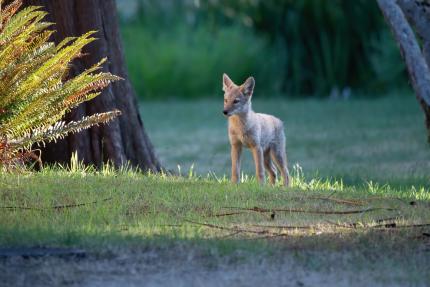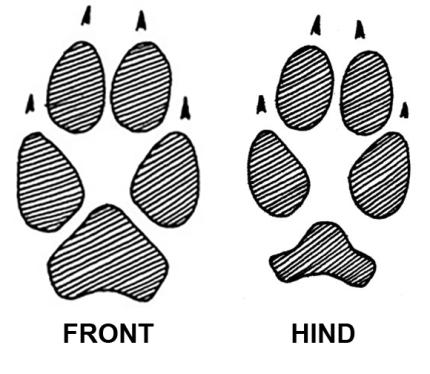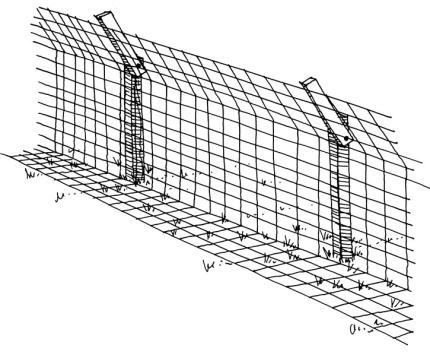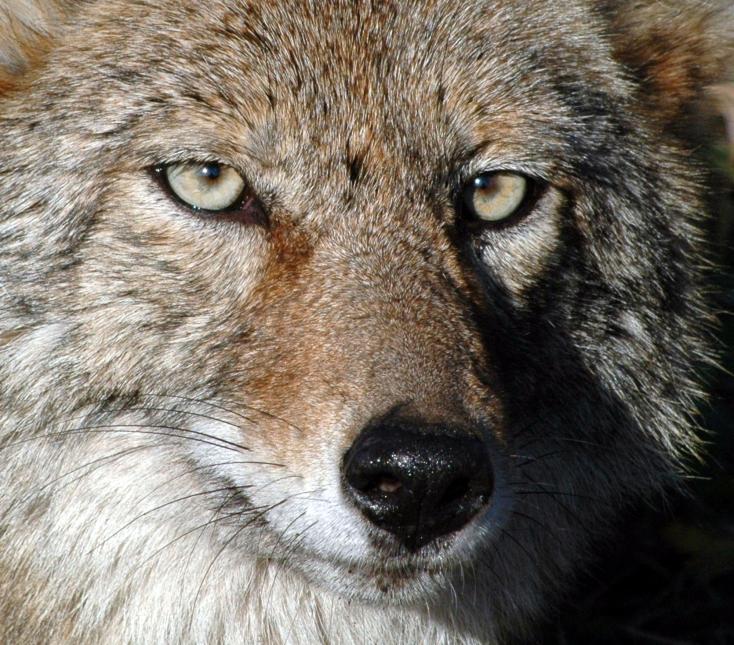For information on living with coyotes, including in urban and suburban areas, see below, read our January 2023 blog post "Tips for living with coyotes", or download this flier (PDF). You can also check out this Seattle Channel episode featuring WDFW biologists: "CityStream: Coexisting with Coyotes in Seattle".
Coyotes in Washington

In pioneer days, coyotes were restricted primarily to the shrubsteppe, arid mountains, and prairies of the interior American West and Mexico. Coyotes have since taken advantage of human activities to expand their range throughout North and Central America, including coastal areas of the Pacific Northwest.
The coyote’s tenacity tries some people’s patience and inspires others’ admiration.
The Washington Department of Fish and Wildlife (WDFW) asks not to receive reports of coyotes going about their normal business, as this is a common species and we prioritize reports of species of greatest conservation need.
Reports of coyotes in the city or suburban areas can be sent to community science programs such as Woodland Park Zoo’s carnivorespotter.org/urban-carnivore-spotter/. More info is available at zoo.org/seattlecarnivores. inaturalist.org/ is another popular site for reporting wildlife sightings.
Due to WDFW’s need to focus on fish and wildlife species of conservation concern, in most cases when coyote management is required in urban or suburban areas that management is contracted by the city, town or private landowners to U.S. Department of Agriculture (USDA) Wildlife Services: aphis.usda.gov/wildlife-state-offices.
Local or county animal services or a WDFW-certified Wildlife Control Operator may also be able to help. Refer to this webpage for more information and frequently asked questions.
If residents witness a coyote attack on supervised or enclosed pets, wildlife violation, or an injured or dangerous animal, we encourage reporting it to WDFW Dispatch by calling 360–902–2936, emailing WILDCOMM@dfw.wa.gov, or by reporting online at: wdfw.wa.gov/about/enforcement/report.
In the event of an immediate public safety issue or attack on a person, call 911. If necessary, ask the dispatcher to connect you with Washington Fish and Wildlife Police.
Description and Range
Physical description
At first glance, the coyote resembles a small German shepherd dog, yet its color can vary from animal to animal. Shades include black, brown, gray, yellow, rust, and tan. Coyotes also have shorter, bushier tails that are carried low, almost dragging the ground, and longer, narrower muzzles than their dog cousins.
Adult coyotes weigh 20 to 35 pounds, with males being slightly larger than females. At the shoulder, an adult male coyote is about 25 inches tall.
Geographic range
In Washington, these intelligent and adaptable animals now manage to occupy almost every conceivable habitat type, from open shrubsteppe to densely forested areas to urban areas. Despite ever-increasing human encroachment and past efforts to eliminate coyotes, the species maintains its numbers and is increasing in some areas.
Living with wildlife
Tracks, Trails, & other Signs

Look for coyote tracks in mud, sand, dust, or snow. Their trails are often found along draws, fence lines, game and livestock trails, next to roads, in the middle of dirt roads, and on ridge tops. When a tree falls across a trail, coyotes have to either go over or under it, depending on their size. Those that go over tend to rub the bark off the top of the log; those that go under sometimes leave their hairs on the underside. Also look for coyote hairs on a wire fence where a trail runs next to or under the fence.
Droppings
Coyote droppings are found in conspicuous places and on or near their trails. The droppings are extremely variable in size, shape, and composition. Individual droppings average 3 to 4 inches long with a diameter of 1 inch. Droppings consisting of a lot of hair may be larger. The residue from pure meat is likely to be semiliquid and black. Those resulting from a diet of cherries, apples, blackberries, huckleberries, elderberries, or other fruits tend to crumble.
Feeding and Hunting Sites
When small mammals such as rabbits are eaten, the head, feet, and hide will have been eaten, leaving a scattering of fur at the feeding site. Bones, feathers, and fur can be seen next to den entries. Signs of digging occur where coyotes follow promising scents and excavate prey, including moles, voles, and gophers.
Calls
Coyotes create a variety of vocalizations. Woofs and growls are short-distance threat and alarm calls; barks and bark-howls are long-distance threat and alarm calls; whines are used in greetings; lone and group howls are given between separated group members when food has been found; and a yip-howl is often done after a group reunites. Juvenile coyotes are often heard in summer, trying out their voices.
Preventing conflict
Humans increase the likelihood of conflicts with coyotes by deliberately or inadvertently feeding the animals, whether by handouts or by providing access to food sources such as garbage, pet food or livestock carcasses. When people provide food, coyotes quickly lose their natural fear of humans and become increasingly aggressive. They also become dependent on the easy food source people provide . Once a coyote stops hunting on its own and loses its fear of people, it becomes dangerous and may attack without warning.
To minimize the risk, keep cats inside, keep dogs leashed, avoid early morning and late evening walks with your pet in areas where coyotes are known to be, and generally keep an eye on children and pets.
Never run away from a coyote! Make loud noises, wave sticks, squirt it with a hose, or otherwise “haze” the coyote if it approaches. Stand tall, stare into the eyes of the coyote and shout at it. You also can throw something at it.
Prevention is the best tool for minimizing conflicts with coyotes and other wildlife. To prevent conflicts with coyotes, use the following management strategies around your property and encourage your neighbors to do the same.
Don’t leave small children unattended where coyotes are frequently seen or heard. If there are coyote sightings in your area, prepare your children for a possible encounter. Explain the reasons why coyotes live there (habitat/food source/ species adaptability) and what they should do if one approaches them (don’t run, be as big, mean, and loud as possible). By shouting a set phrase such as “go away coyote” when they encounter one, children will inform nearby adults of the coyote’s presence as opposed to a general scream. Demonstrate and rehearse encounter behavior with the children.
Never feed coyotes. Coyotes that are fed by people often lose their fear of humans and develop a territorial attitude that may lead to aggressive behavior. Try to educate your friends and neighbors about the problems associated with feeding coyotes. If you belong to a homeowner’s association or neighborhood watch, bring up the subject during one of the meetings.
Don’t give coyotes access to garbage. Keep garbage can lids on tight by securing them with rope, chain, bungee cords, or weights. Better yet, buy quality garbage cans with clamps or other mechanisms that hold lids on. To prevent tipping, secure the side handles to metal or wooden stakes driven into the ground. Or keep your cans in tight-fitting bins, a shed, or a garage.
Prevent access to fruit and compost. Keep fruit trees fenced, or pick up fruit that falls to the ground. Keep compost piles within a fenced area or securely covered. Cover new compost material with soil or lime to prevent it from smelling. Never include animal matter in your compost; it attracts coyotes. If burying food scraps, cover them with at least 12 inches of soil, and don’t leave any garbage above ground in the area—including the stinky shovel.
Feed dogs and cats indoors. If you must feed your pets outside, do so in the morning or at midday, and pick up food, water bowls, leftovers, and spilled food well before dark every day.
Don’t feed feral cats (domestic cats gone wild). Coyotes prey on these cats as well as any feed you leave out for the feral cats.
Prevent the buildup of feeder foods under bird feeders. Coyotes will eat bird food and are attracted to the many birds and rodents that come to feeders. (See the handout, “Preventing Problems at Bird Feeders” for information on feeder management.)

Keep dogs and cats indoors, especially from dusk to dawn. If left outside at night in an unprotected area, cats and small to mid-size dogs may be killed by coyotes. Pets can be easy prey for coyotes. Being raised by humans leaves them unsuspecting once they leave the safety of your home. If you suspect losing a dog or cat to a coyote, notify your neighbors. Once a coyote finds easy prey it will continually hunt in the area.
Modify the landscape around children’s play areas. Shrubs and trees should be pruned several feet above ground level so coyotes can’t hide in them. Keep deterrents nearby in times of increased sightings. An old hockey stick, broom, or a pile of stones near the play area can help prepare children for an encounter and will remind them of effective encounter behavior.


Build a coyote-proof fence. Coyotes don’t leap fences in a single bound but, like domestic dogs, they grip the top with their front paws and kick themselves upward and over with the back legs. Their tendency to climb will depend on the individual animal and its motivation. A 5-foot woven-wire fence with extenders facing outward at the top of each post should prevent coyotes from climbing over (Fig. 6).
However, all coyotes are excellent diggers, and an effective fence needs to extend at least 8 inches below the surface, or have a galvanized-wire apron that extends out from the fence at least 15 inches (Fig. 6).
Electric fences can also keep coyotes out of an enclosed area (Figs. 7 and 8). Such a fence doesn’t need to be as high as a woven-wire fence because a coyote’s first instinct will be to pass through the wires instead of jumping over them. Digging under electric fences usually doesn’t occur if the bottom wire is electrified.
Alternatively, install a commercial device to prevent coyotes from being able to get the foothold necessary to hoist them over a fence (Fig. 9).
Enclose poultry (chickens, ducks, and turkeys) in a secure outdoor pen and house. Coyotes will eat poultry and their eggs if they can get to them. Note: Other killers of poultry include foxes, skunks, raccoons, feral cats, dogs, bobcats, opossums, weasels, hawks, and owls.
To prevent coyotes from accessing birds in their night roosts, equip poultry houses with well-fitted doors and secure locking mechanisms. To prevent them from trying to go under the fence, stake the bottom of the fence flush to the ground, or line the bottom of the fence with bricks, fence posts, or similar items. For ways to prevent coyotes from digging under a fence or structure see Figure 10.
To prevent coyotes and other animals from accessing poultry during the day, completely enclose outdoor pens with 1-inch chicken wire placed over a sturdy wooden framework.
Keep livestock and small animals that live outdoors confined in secure pens during periods of vulnerability. All animals should be confined from dusk to dawn. (Temporary or portable fencing keeps livestock together so that they can be guarded more effectively.) During birthing season, keep young and vulnerable animals confined at all times. Do not use remote pastures or holding areas, especially when there has been a recent coyote attack. Remove any sick and injured animals immediately. Ensure that young animals have a healthy diet so that they are strong and less vulnerable to predators.
Livestock producers have discovered that scare devices, such as motion detectors, radios, and other noise makers, will deter coyotes—until they realize that they aren’t dangerous.
Note: Many ranchers now attempt to kill coyotes only when damage has occurred. If your property is the home territory of coyotes that don’t harm livestock, they will keep away other coyotes that are potential livestock killers. Coyotes also benefit ranchers and other property owners by helping control populations of mice, rats, voles, moles, gophers, rabbits, and hares.
Remove or bury dead livestock. Coyotes, with their keen sense of smell, quickly find dead animals. Cover the carcass with a minimum of 2 feet of soil.
For a large property with livestock, consider using a guard animal. There are specialty breeds of dogs that can defend livestock. Donkeys and llamas have also successfully been used as guard animals. As with any guard animal, pros and cons exist. Purchase a guard animal from a reputable breeder who knows the animal he or she sells. Some breeders offer various guarantees on their guard animals, including a replacement if an animal fails to perform as expected.
Lethal Control
If all efforts to dissuade a problem coyote fail and it continues to be a threat to humans, or animals in their care, the animal may have to be killed.
Due to WDFW’s need to focus on fish and wildlife species of conservation concern, in most cases when coyote management is required in urban or suburban areas that management is contracted by the city, town or private landowners to U.S. Department of Agriculture (USDA) Wildlife Services.
In suburban areas of southern California, trapping and euthanizing coyotes has been shown not only to remove the individual problem animal, but also to modify the behavior of the local coyote population. When humans remove a few coyotes, the local population may regain its fear of humans in areas where large numbers of humans are found. It’s neither necessary nor possible to eliminate the entire population of coyotes in a given area. Contact your local wildlife office for additional information.
See Trapping Wildlife for additional information, including live-trapping coyotes.
Public Health Concerns
Coyote diseases or parasites are rarely a risk to humans, but could be a risk to domestic dogs in Washington. Anyone handling a coyote should wear rubber gloves, and wash their hands well when finished.
Canine distemper, a disease that affects domestic dogs, is found in our coyote populations. Have your dogs vaccinated for canine distemper to prevent them from contracting the disease. (For more information on canine distemper, see “Public Health Concerns” in Raccoons.)
Canine parvovirus, or “parvo” is another disease that affects domestic dogs and is found in our coyote populations. Parvo vaccinations have helped to control the spread of this disease. Despite being vaccinated, some dogs—especially puppies and older domestic dogs—still contract and die from parvo.
Parvo is usually spread to coyotes and domestic dogs by direct or indirect contact with infected droppings. Exposure to domestic dogs occurs where dogs assemble, such as parks, dog shows, kennels, pet shops, and where they have contact with coyotes. Contact your veterinarian for vaccination information if your dog is ill.
Mange occurs in coyote and red fox populations in Washington. Mange is caused by a parasitic mite that causes extreme irritation when it burrows into the outer layer of the animal’s skin. The mite causing mange is fairly species-specific, and thus it would be difficult for a human to contract mange from an infected wild animal.
If a person is bitten or scratched by a coyote, immediately scrub the wound with soap and water. Flush the wound liberally with tap water. In other parts of North America coyotes can carry rabies. Contact your physician and the local health department immediately. If your pet is bitten, follow the same cleansing procedure and contact your veterinarian.
Legal Status
Washington state does not classify coyotes as game animals, but a state license is required to hunt or trap them (RCW 77.32.010). The owner, the owner's immediate family, employee, or a tenant of real property may kill or trap a coyote on that property if it is damaging crops or domestic animals (RCW 77.36.030). A license is not required in such cases. Check with your county and/or local jurisdiction for local restrictions. Except for bona fide public or private zoological parks, persons and entities are prohibited from importing a coyote into Washington state without a permit from the Department of Agriculture and written permission from the Department of Health. Persons and entities are also prohibited from acquiring, selling, bartering, exchanging, giving, purchasing, or trapping a coyote for a pet or export (WAC 246-100-191).




